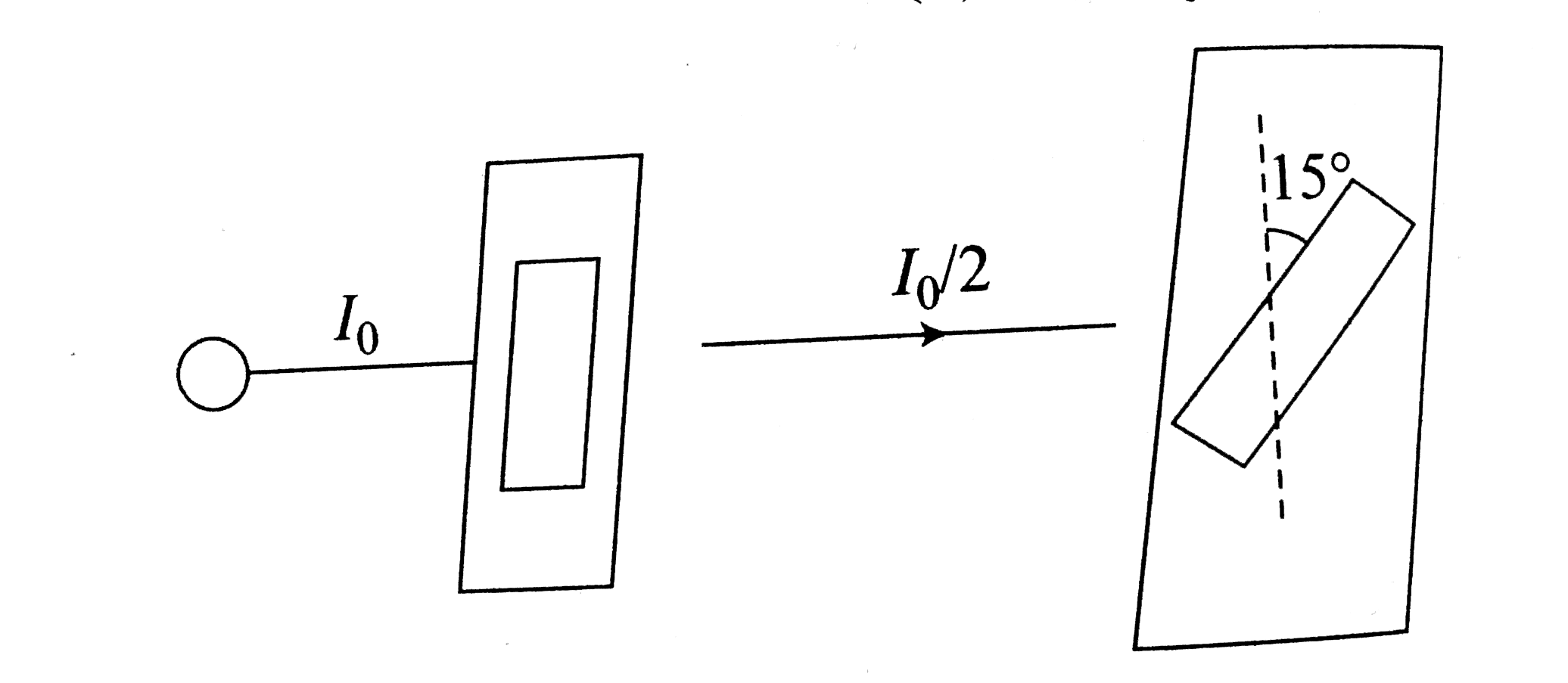Explain how, using a Polaroid and a quarter-wave plate made of positive uniaxial crystal (ne>n0), yo distinguish
(a) light with left-hand circualr polarization from that with right-hand polarization,
(b) natural light from light with circualr polarization and from the compoitive of natural light and that with circular polarization.
The light with right circular polarization (viewed against the oncoming light, this means that the light vector is moving clock wise) becomes plane polarized on passing through a quarter-wave plate. In this case the direction of oscillations of the electric vector of the electromagnetic wave forms an angle of +45∘ with the axis of the crystal OO' (see Fig. (b) below). In the cae of left hand circular polarizations, this angle will be −45∘ (Fig.)
(b) If for any position of the plate the rotation of the polaroid (located brhind the palte) does nor bring about any variation in the intensity of the transmitted light, the incident light is unpolarized (i.e. natural). If the intensity of the transmitted light can drop to zero on rotating the analyzer polarid for some position of the quarter wave plate, the incident light is circulary polarized. If it varies but does not drop to zero, it must be a maxture of natural and circualry polarized light.

Topper's Solved these Questions
- OPTICSBook:IE IRODOV, LA SENA & SS KROTOVChapter:OPTICSExercise:Dispersion And Absorption Of Light
Explore 24 Videos
- OPTICSBook:IE IRODOV, LA SENA & SS KROTOVChapter:OPTICSExercise:Optics Of Moving Sources
Explore 22 Videos
- OPTICSBook:IE IRODOV, LA SENA & SS KROTOVChapter:OPTICSExercise:Diffraction Of Light
Explore 60 Videos
- MECHANICSBook:IE IRODOV, LA SENA & SS KROTOVChapter:MECHANICSExercise:Mechanics Problems
Explore 92 Videos
- OSCILLATIONS AND WAVESBook:IE IRODOV, LA SENA & SS KROTOVChapter:OSCILLATIONS AND WAVESExercise:Electromagnetic Waves, Radiation
Explore 36 Videos
Similar Questions
(a) What is linearly polarized light ? Describe briefly using a diagram how sunlight is polarised.
(b) Unpolarised light is incident on a polaroid. How would the intensity of transmitted light change when the polaroid is rotated?
View SolutionUsing the tables of the Appendix, calculate the difference of refractive indices of quartz for light wavelength λ=589.5nm with right-hand and left-hand circular polarizations.
View Solution
Knowledge Check
The polaroids are placed in the path of unpolarized beam of intensity I0 such that no light is emitted fromthesecond polarid. If a third polaroid whose polarization axis makes an angle θ with the polarization axis of first polaroid, is placed between these4 polariods then the intensity of light emerging from the last polariod will be
A(I08)sin22θB(I04)sin22θC(I02)cos4θDI0cos4θTwo polaroids are placed in the path of unpolarized beam of intensity I0 such that no light is emitted from the second polaroid. If a third polaroid whose polarization axis makes an angle θ with the polarization axis of first polaroid, is placed between these polaroids, then the intensity of light emerging from the last polaroid will be :
A(I08)sin22θB(I04)sin22θC(I02)cos4θDI0cos4θTwo polaroids are placed in the path of unpolarized beam of intensity I0 such that no light is emitted from the second polaroid. If a third polaroid whose polarization axis makes an angle θ with the polarization axis of first polaroid, is placed between these polaroids, then the intensity of light emerging from the last polaroid will be :
A(I08)sin22θB(I04)sin22θC(I02)cos4θDI0cos4θ
Two polaroids are placed in the path of unpolarized beam of intensity I0 such that no light is emitted from the second polarid. If a third polaroid whose polarization axis makes an angle θ with the polarization axis of first polaroid, is placed between these two polariods then the intensity of light emerging from the last polaroid will be
View SolutionMonochromatic plane-polarized light with angular frequency ω through a certain substance along a unifrom magnetic field h. Find the difference of refractive indices for right-hand and left-hand components of light beam with circular polarization if the verdet consatnt is equal to V.
View SolutionLight is incident on a polarizer with intensity I0. A second prism called analyzer is kept at a angle of 15∘, from the first polarizer then the intensity of final emergent light will be

View SolutionThe angle of incidence at which reflected light is totally polarized for reflection from air to glass (refraction index n) is
View SolutionThe angle of incidence at which reflected light is totally polarized for reflection from air to glass (refraction index n ) is
View Solution

